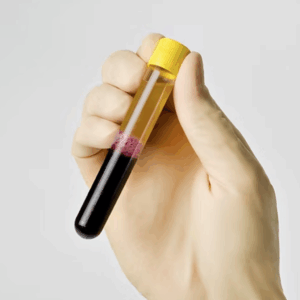
The Role of Platelet-Rich Plasma (PRP) Therapy in Treating Foot Conditions
Introduction
Platelet-Rich Plasma (PRP) therapy is an innovative treatment that has gained popularity in recent years for its potential to accelerate healing and reduce pain in various medical conditions. This therapy is particularly beneficial for foot and ankle issues, offering a minimally invasive alternative to traditional treatments.
What is PRP Therapy?
PRP therapy involves extracting a small amount of the patient’s blood, which is then processed to concentrate the platelets. Platelets are rich in growth factors that play a crucial role in healing and tissue regeneration. The concentrated platelets are then injected into the affected area to stimulate the body’s natural healing processes.
How PRP Therapy Works
- Blood Collection: A small amount of blood is drawn from the patient.
- Centrifugation: The blood is placed in a centrifuge, which spins it at high speeds to separate the platelets from other blood components.
- Injection: The concentrated platelets are injected into the injured area, often guided by ultrasound to ensure precise placement.
Conditions Treated with PRP Therapy
PRP therapy is used to treat a variety of foot and ankle conditions, including:
- Plantar Fasciitis: Inflammation of the plantar fascia, a thick band of tissue that runs across the bottom of the foot.
- Achilles Tendinitis: Inflammation of the Achilles tendon, which connects the calf muscles to the heel bone.
- Ankle Sprains: Injuries to the ligaments in the ankle.
- Arthritis: Degeneration of the joints, leading to pain and stiffness.
Benefits of PRP Therapy
- Accelerated Healing: PRP therapy can speed up the healing process by stimulating tissue regeneration.
- Reduced Pain: The growth factors in PRP can help reduce inflammation and pain in the affected area.
- Minimally Invasive: PRP therapy is a non-surgical treatment, making it a safer option with fewer risks and a shorter recovery time compared to surgery.
What to Expect During PRP Treatment
The PRP treatment process is relatively quick and straightforward:
- Preparation: The area to be treated is cleaned and prepped.
- Injection: The PRP is injected into the affected area, often with the aid of ultrasound imaging.
- Post-Treatment Care: Patients may experience mild discomfort at the injection site, which typically resolves within a few days. Rest and physical therapy may be recommended to support the healing process.
